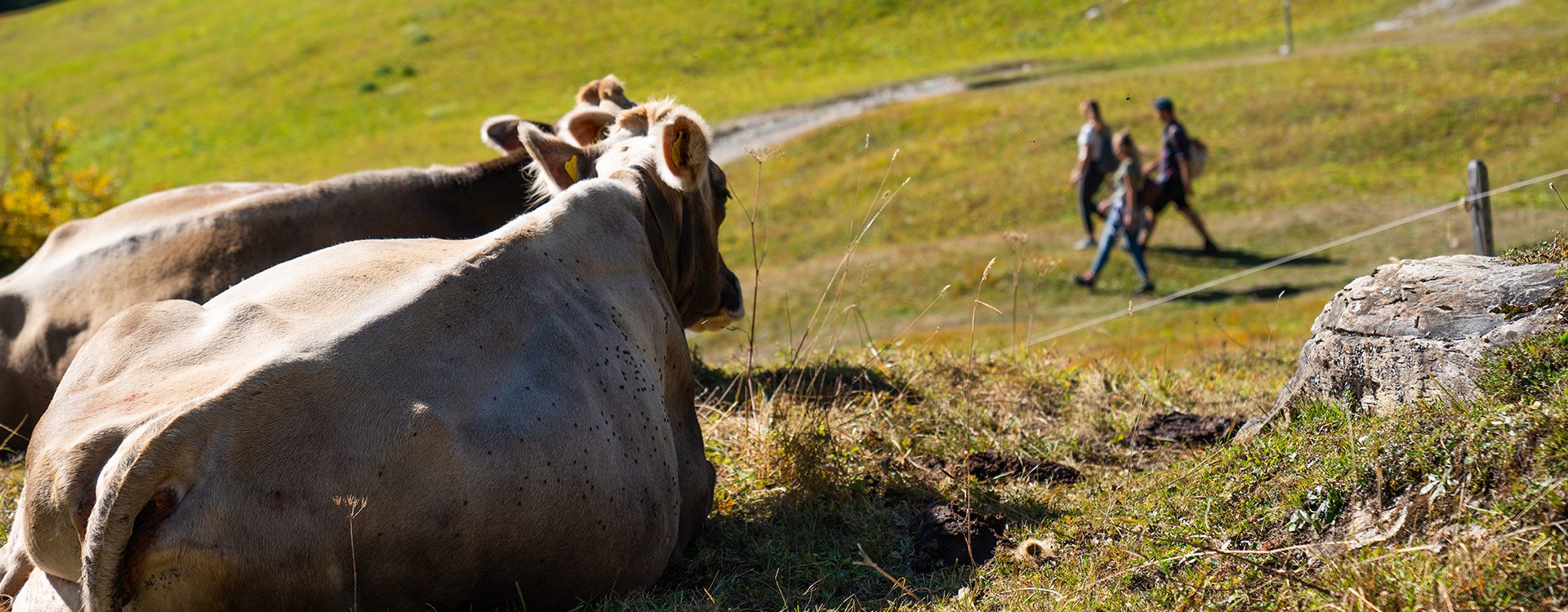Suckler cow farming, guarding dogs and wolves
Hiking and biking trails occasionally take you across farmland and through wildlife habitats. Follow a few basic rules to help ensure peaceful encounters between humans and animals.
The project
The map gives you an idea of where suckler cows and livestock guarding dogs are currently roaming. If an area is marked in orange, you’re sure to come across them. But even if it’s not marked, there’s still a chance you might. The map is based on GPS-tracked animals and detailed mapping of alpine pastures. It’s here to help you plan your route — or decide on the spot whether to cross a pasture or take a wide detour.

